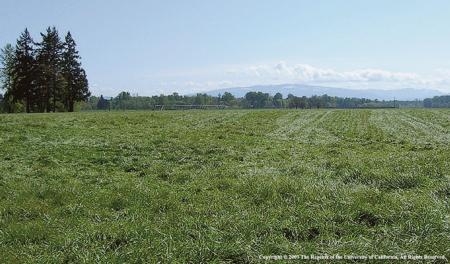Posts Tagged: Alan Fulton
Drought news dominates the headlines
NBC News spoke to Doug Parker, director of the California Institute of Water Resources, about drought implications already being felt in the California agricultural sector.
He said an estimated 500,000 acres of farmland sits unplanted due to water shortages, a number that could nearly double if the drought extends into 2015.
"In the long term, it could change some of the cropping patterns in California, especially for the animal industry," Parker told NBC, explaining that the economics of raising and tending livestock hinges on locally grown feed. "Without water to grow it, you really end up just having to sell off animals." Much of the state's beef cattle, for example, roam unirrigated rangelands that are parched.
Parker was also quoted in a drought story by Aljazeera America, which focused on Gov. Brown's $687 million emergency drought plan.
“I think it's a good first start,” Parker said. “But I don't think this will be the end of it.”
Gov. Brown's proposal doesn't provide funding for long-term solutions to California's water problems, but it could provide much-needed immediate assistance to many of the driest communities.
Capital Press spoke to Alan Fulton, UC Cooperative Extension advisor for Tehama, Colusa, Glen and Shasta counties, about the U.S. Bureau of Reclamation's dire 2014 surface water allocation plan. He said most farmers will rely on groundwater to get through the season.
"The main thing that will happen is just improving their wells and making sure they're operable,” Fulton said. “They're trying to manage through the drought with hopes of a wet year next year.”
Mother Jones featured a drought story rich with infographics outlining the surprising amount of water required to grow common food crops and the amount of water used per person per day in California communities. The article includes commentary from Jay Lund, professor of civil and environmental engineering at UC Davis, about the future of agriculture in the Golden State.
Lund said the state's current water problems mean agriculture may soon play a less important role in California's economy, as the business of growing food moves to the South and the Midwest, where water is less expensive. Production rates for thirsty crops like alfalfa and cotton have already diminished significantly in the last few years, Lund said. Between 2006 and 2010 alone, the amount of land irrigated for cotton fell by 46 percent.
UCCE plans meeting to help producers with new water rules
Farmers and ranchers who use river or stream water must start submitting precise monthly records to the California Water Quality Control Board this year, said an article by Tim Hearden in Capital Press.
Before the new law took effect, the water board asked landowners for estimates, said Allan Fulton, a University of California Cooperative Extension advisor who serves Colusa, Glenn and Shasta counties. Fulton is an irrigation and water resources expert.
"There is a statewide effort at trying to more precisely understand and quantify how water is being used," he said.
UC Cooperative Extension will host a workshop March 31 to discuss the new requirement.
"I've had enough questions that I thought we ought to organize something," said Larry Forero, a UCCE director and advisor in Trinity County who specializes in livestock and natural resources.
Agritourism generates income, promotes farms
Tim Hearden, Capital Press
Agritourism, or activities and products offered on working farms to generate extra income from visitors, is a growing movement in California.
A recent UC survey determined that about 2.4 million visitors came to California farms in 2008 to enjoy some facet of agritourism, which could include lodges and cabins, pumpkin patches, corn mazes, "U-pick" operations and special events such as weddings and conferences.
"I think it really does help" farms, said UC agritourism coordinator Penny Leff. "It helps their name recognition if they're selling at the farmers' market or local stores. It helps in general for people to understand what farming's about, that food comes from farms."


